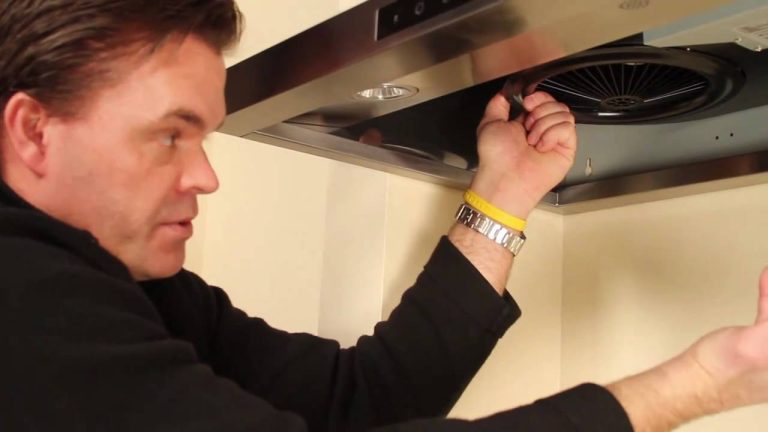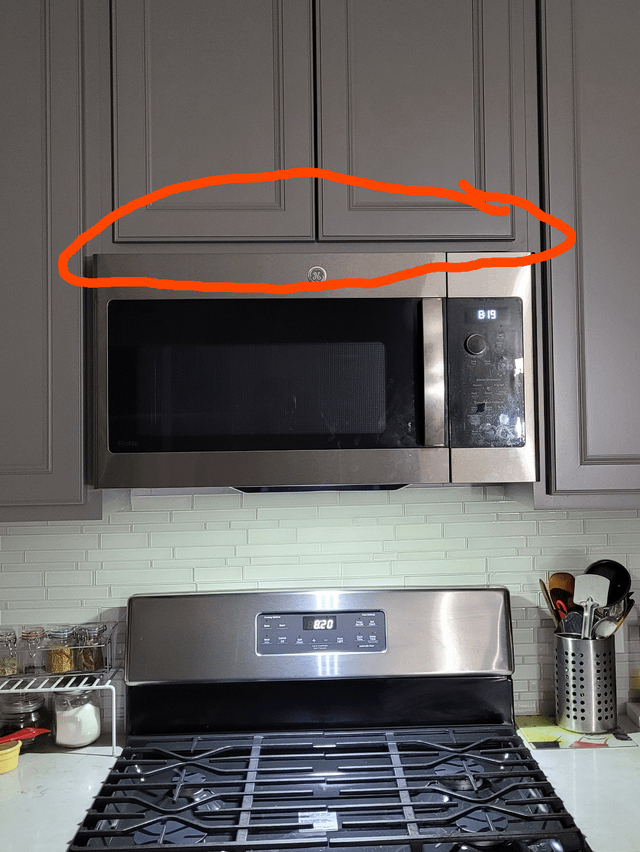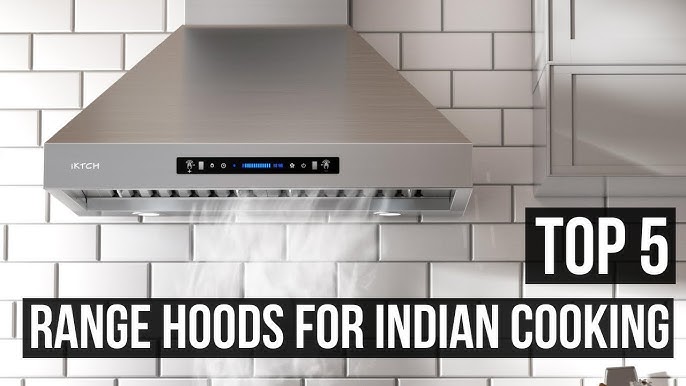Vent range hoods can be effectively installed through either the roof or the wall. The choice depends on your kitchen layout and local building codes.
Choosing the right venting option for your range hood is crucial for optimal performance. Wall venting is often simpler and more cost-effective for many kitchens. It allows for a straight path to the exterior, reducing potential airflow issues. Roof venting may be necessary for specific designs or multi-story homes but requires additional installation considerations.
Both methods have their pros and cons, influencing factors like noise levels, efficiency, and installation complexity. Understanding these differences helps homeowners make informed decisions, ensuring their kitchen remains fresh and free of smoke and odors. Ultimately, the best choice aligns with your home’s unique structure and your cooking habits.
Introduction To Vent Range Hoods
Proper ventilation is essential for a healthy kitchen. It helps remove smoke, odors, and grease. This keeps the air fresh and safe to breathe. A vent range hood plays a crucial role in this process.
There are different types of vent range hoods available. Each type has unique features that suit various needs. Under-cabinet hoods fit under kitchen cabinets. Wall-mounted hoods attach to the wall and offer good suction. Island hoods hang above cooking areas and are stylish. Downdraft hoods pop up from the counter, saving space.
| Type | Features |
|---|---|
| Under-cabinet | Space-saving, easy installation |
| Wall-mounted | Powerful suction, stylish design |
| Island | Elegant look, ideal for open kitchens |
| Downdraft | Retractable, space-efficient |
Pros And Cons Of Roof Venting
Roof venting offers several benefits for your kitchen. It helps in removing smoke and odors effectively. This leads to a cleaner and fresher environment. Roof vents can also improve your home’s air quality. They help in reducing humidity levels.
Another advantage is that roof vents are less visible. This keeps your home’s exterior looking neat. They can also reduce the risk of backdrafts from nearby structures.
Challenges exist with roof venting too. Installation can be more complicated compared to wall venting. It may require additional materials and skilled labor. Weather can also affect roof vents. Rain and snow can block the vent if not installed correctly.
Regular maintenance is essential for roof vents. They can accumulate debris, which may reduce efficiency.
Pros And Cons Of Wall Venting
Wall venting offers several benefits. It is often easier to install than roof venting. This method uses a shorter duct, which improves airflow. Less ductwork can mean lower costs. Wall venting also keeps the kitchen design clean and simple.
On the downside, wall venting has some drawbacks. It may not be as effective in removing smoke. Strong winds can push air back into the kitchen. This can cause unpleasant odors. Also, wall vents can be more visible, affecting the home’s look.

Credit: joneakes.com
Comparing Roof And Wall Venting
Roof venting and wall venting both have unique benefits. Roof vents often provide better airflow. They help smoke and odors escape quickly. This can lead to a cleaner kitchen environment.
Wall vents are easier to install. They require less effort and tools. Installation near the stove can improve performance. It may also reduce the duct length.
| Feature | Roof Venting | Wall Venting |
|---|---|---|
| Efficiency | Higher airflow | Good but lower than roof |
| Installation | More complex | Easy and quick |
| Space Needed | Requires roof access | Can fit in tight spaces |
Assessing Your Kitchen Layout
Assessing your kitchen layout is crucial for venting options. Space and structure constraints greatly influence your choice. Measure the area where the vent range hood will be installed. Ensure there is enough room for either a roof or wall vent. Consider existing pipes, ducts, and other obstacles.
Choosing the best venting option depends on your kitchen design. Roof vents are ideal for homes with limited wall space. They require more installation effort but can be more efficient. Wall vents are easier to install and work well in many layouts. Evaluate both options based on your specific kitchen needs.

Credit: m.youtube.com
Installation Tips For Roof Venting
Proper sealing and waterproofing are crucial for roof venting. Use high-quality sealant around the vent. This prevents leaks and keeps moisture out.
Check for gaps or cracks after installation. Fill any openings with caulk or foam. This will help maintain a tight seal.
Use a flashing kit to direct water away from the vent. This protects your roof and improves durability. Make sure the flashing fits snugly against the surface.
Always wear safety gear during installation. Use gloves to protect your hands. A hard hat can protect your head from falling debris.
Check local building codes for specific requirements. Following these guidelines ensures a safe and effective installation.
Installation Tips For Wall Venting
Choosing the right location for wall venting is crucial. Pick a spot near the cooking area. This helps capture smoke and odors effectively. Avoid placing the vent too far from the range.
Ensure the ductwork is properly sized. Use a smooth, straight path to reduce airflow resistance. Keep duct lengths as short as possible. Use the right materials to prevent leaks.
Install the vent at a height of at least 30 inches above the range. This ensures efficient airflow. Check local codes for any specific height requirements.
Consider the external environment. Avoid locations near windows or doors. This prevents unwanted backdrafts and ensures better performance.

Credit: m.youtube.com
Maintenance And Upkeep
Regular cleaning keeps your vent range hood working well. Clean it at least once a month. Use warm, soapy water for the exterior. A soft cloth works best for wiping surfaces.
The filters need special attention. Wash metal filters every few weeks. Replace or clean disposable filters based on the manufacturer’s advice.
Signs of trouble may appear. Notice unusual noises or reduced airflow? These might mean a blockage. Call a professional to check it. Regular maintenance helps avoid bigger problems.
Seeking help early can save money. Professionals can spot issues you might miss. Trust their expertise for safe operation.
Local Building Codes And Regulations
Local building codes affect vent range hood installation. Understanding compliance is key. Each area has specific rules. These rules ensure safety and effectiveness. Check local regulations before starting.
Obtaining necessary permits is crucial for your project. Permits show your work meets safety standards. Failure to get permits can lead to fines. It may also require costly corrections later. Always consult with local authorities for guidance.
Final Thoughts
Choosing between a roof or wall vent for your range hood is important. Each option has its own benefits. A roof vent often provides better aesthetics and keeps the exterior neat. Wall vents may be easier to install and maintain.
Consider your home’s layout and future upgrades. If you plan to remodel, a wall vent might be more flexible. Think about local codes and weather conditions. These factors can affect your choice. Always aim for maximum efficiency in your setup.
Evaluate the cost of installation and long-term maintenance. Choose a solution that fits your budget and needs. This will ensure a successful and satisfying cooking experience.
Frequently Asked Questions
Should I Vent My Range Hood Through The Roof?
Venting a range hood through the roof is often recommended for optimal airflow. This method minimizes the risk of grease buildup in ductwork. However, it can be more complex and costly than wall venting. Consider local codes and consult a professional for best practices.
Is It Better To Vent Through The Wall?
Venting through the wall can be simpler and less expensive. This option often requires less ductwork, making installation easier. However, wall vents may not provide as effective airflow as roof vents. It’s crucial to assess your kitchen layout and airflow requirements before deciding.
What Are The Benefits Of Roof Venting?
Roof venting offers several advantages, including enhanced air circulation and grease management. It helps maintain indoor air quality by efficiently expelling smoke and odors. Additionally, roof vents can reduce the risk of pests entering your home. This method is ideal for homes with specific architectural designs.
Can I Install A Range Hood Vent Myself?
While DIY installation is possible, it’s often best to hire a professional. Proper venting requires knowledge of local codes and safety standards. Mistakes can lead to inefficiencies or even fire hazards. If you’re inexperienced, consider consulting an expert to ensure a safe and effective installation.
Conclusion
Choosing to vent your range hood through the roof or wall depends on your specific kitchen setup. Each option has its pros and cons. Consider factors like ease of installation and airflow efficiency. Making the right choice enhances your kitchen’s functionality and improves air quality, making cooking more enjoyable.





